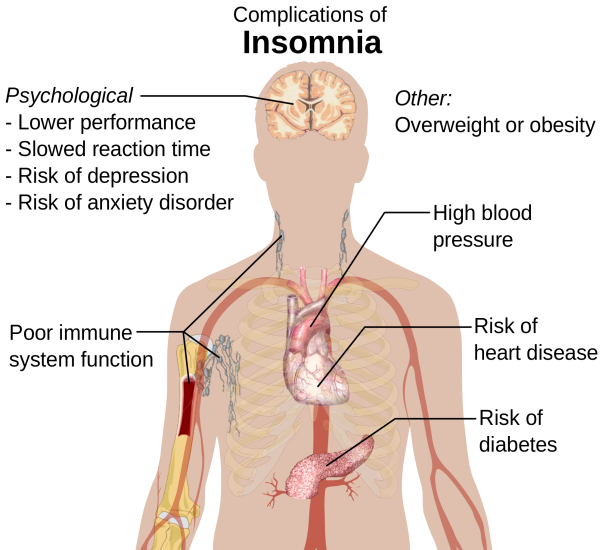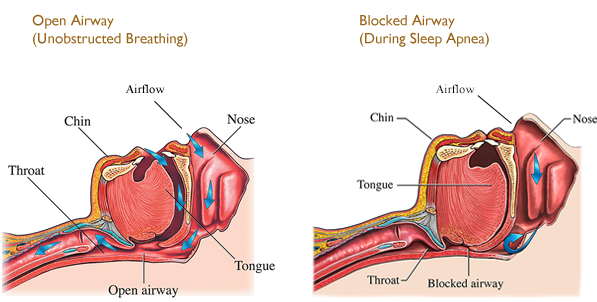CHAPTER 6: Sleep
IN THIS CHAPTER
Sleep Disorders
1The most common sleep disorder, and the one most people are familiar with, is insomnia. Some insomniacs have difficulty falling asleep initially, but others fall asleep and then awaken partway through the night and cannot fall asleep again. Although a variety of short-acting sedatives and sedating antidepressant drugs are available to help, none produces a truly natural and restful sleep state because they tend to suppress the deeper stages of slow wave sleep. They also are not effective in helping people stay asleep.

2Many of the most common disorders, listed below, disrupt sleep and result in inadequate amounts of sleep, particularly of the deeper stages.
- 3 Excessive daytime sleepiness, which has many causes.
-
4
Obstructive sleep apnea occurs as sleep deepens and the airway muscles in the throat relax to
the point of collapse, closing the airway. The individual has difficulty breating and wakes up without
entering the deeper stages of slow wave sleep. This condition can cause high blood pressure and may
increase the risk of heart attack. Increased daytime sleepiness that results from sleep apnea can lead
to an increased risk of daytime accidents, especially automobile accidents. Treatment may include a
variety of strategies to reduce airway collapse during sleep. Whereas simple things like losing weight,
avoiding alcohol and sedating drugs prior to sleep, and avoiding sleeping on one’s back can sometimes
help, most people with sleep apnea require devices that induce continuous positive airway pressure to
keep the airway open. One such device is a small mask that fits over the nose to provide an airstream
under pressure during sleep. In some cases, surgery is needed to correct the airway anatomy.

[5] Sleep Apnea - 5 Periodic limb movements of sleep are intermittent jerks of the legs or arms that occur as the individual enters slow wave sleep. These movements can cause arousal from sleep. A related disorder, called REM behavior disorder, occurs when muscles fail to become paralyzed during REM sleep. As a result, people literally act out their dreams by getting up and moving around. Needless to say, this disorder can be very disruptive to a normal night’s sleep. Both disorders are more common in people with Parkinson’s disease, and both can be treated with drugs for Parkinson’s or with a benzodiazepine called clonazepam.
- 6 Narcolepsy is a relatively uncommon condition — only one case per 3,000 people — in which the switching mechanisms controlling the transitions into sleep, particularly REM sleep, do not work properly. This problem is due to the loss of nerve cells in the lateral hypothalamus that contain the neurotransmitter orexin (also known as hypocretin). People with narcolepsy have sleep attacks during the day, in which they suddenly fall asleep. This is socially disruptive, as well as dangerous; for example, if a sleep attack strikes while someone with narcolepsy is driving, it could result in an accident. People with narcolepsy tend to enter REM sleep very quickly as well and may even enter a dreaming state while still partially awake, a condition known as hypnagogic hallucination. They also have attacks during which they lose muscle tone — a state similar to what occurs during REM sleep but instead happens while they are awake. These attacks of paralysis, known as cataplexy, can be triggered by emotional experiences, even by hearing a funny joke.
7Recently, studies into the mechanism of narcolepsy have given researchers important insights into the processes that control these mysterious transitions between waking, slow wave sleep, and REM sleep states.
